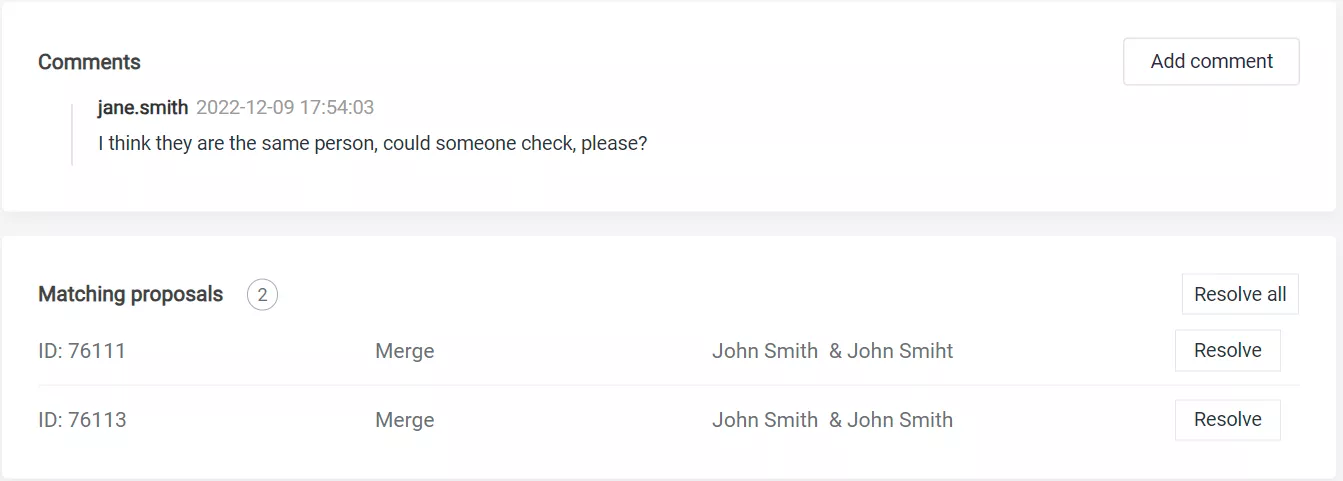How golden are your records
Master data and reference data are often mistaken for one another. It’s not shocking as both concepts have their similarities. Compared to transactional data, both are rather static, as they do not grow and change at the same rate that transactions occur. Nonetheless, they have their differences as well:
- Reference data is data that is used to classify other data. You will often find it in dropdowns throughout applications. Some clear examples are country codes, currencies, units of measurement, products and indexes. Often the dataset of reference data is limited to a code and a description of that code. Reference data ensures that other data is classified with respect to agreed conventions and standards.
- Master data describes businesses and business entities, such as customers, employees, financial accounts, products, suppliers, etc. A master data entity can have a substantial number of attributes that describe the business entity. Some of these attributes can even be reference data (e.g. country code of a customer). Master data is used to give business context to transactions that occur in the organization. Attributes of a master data entity allow for flexible analysis of those transactions when combined with dimensional modeling.
Regardless of their differences, both types of data require management and curation.
Reference data is often maintained by external organizations. Therefore, it is important to keep it in sync with any changes made by those third parties. For internal reference data, governance is required to ensure that changes to reference data are made in a controlled manner and distributed throughout the organization and ICT applications.
Master data is owned by the company itself, as it uniquely describes its business entities. Thus, companies must rely on their own processes to ensure that master data is created and maintained in a controlled manner. This is where it often can go wrong, as most companies have their data spread throughout their data ecosystem and operational ICT systems. There can be the same customer in the CRM system as in the accounting system and yet it might be impossible to combine data from both due to lack of conformity. Sometimes you need attributes for reporting that do not fit the data model of the operational applications. This is when manual enrichment often happens in Excel, which results in a spiral of manual adjustments for years to come as an Excel file is a document that often lives on its own and each user will have their own version of the truth.
Master Data Management (MDM) solutions look to solve these issues by offering a central location where data from various sources can be combined and matched to achieve a golden record for your entity. Often these tools also allow you to enrich datasets with attributes and make them available to the relevant users. To keep track and control of changes, you have logs and workflows, with change management and approval flows built in.
Example from Ataccama Master Data Management
Jane has identified a potential issue in the customer table. There seems to be a duplicate value. She launches a request to the data owner to solve the issue and the data owner gets a new task assigned to them to investigate the potential duplicate:

At element61, we have extensive experience in building data platforms that integrate with solutions for Master Data Management.
If you want to know more about our approach, contact us for more information or with your specific request.
